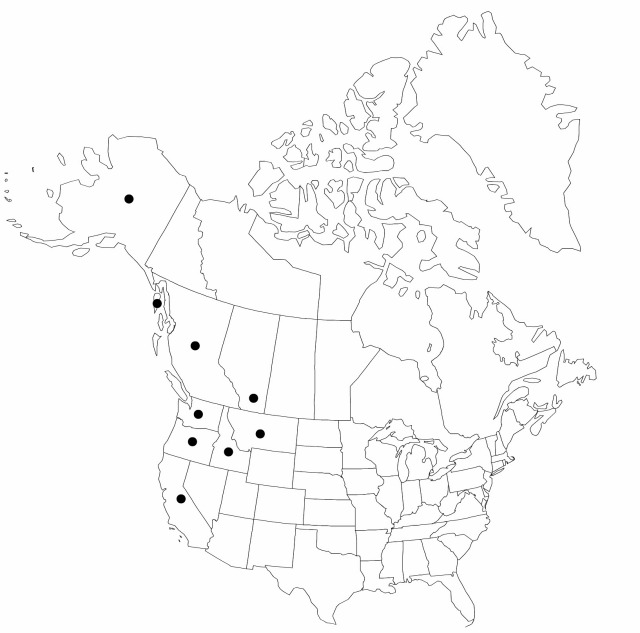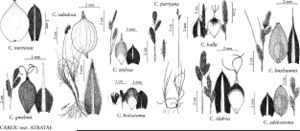Carex mertensii
Mém. Acad. Imp. Sci. St. Pétersbourg Divers Savans 2: 168. 1832.
Plants cespitose. Culms 30–80 cm, distally scabrous. Leaves basal and cauline, 4–8 mm wide; proximal leaves reduced to sheaths. Inflorescences: proximal bracts usually exceeding, occasionally shorter than, inflorescences; spikes separate, the proximal often distant, pendent, long-pendunculate, elongate, cylindric or clavate, 10–40 × 7–9 mm; lateral 4–6(–9) spikes pistillate; terminal spike gynecandrous. Pistillate scales dark brown or black to margins, ovate or lanceolate, conspicuously shorter and narrower than perigynia, midvein lighter colored than body, conspicuous, often raised, prominent, mucronate. Perigynia ascending, green becoming pale yellow or brown, faintly veined, ovate, 4–5 × 2.5–3.5 mm, apex gradually beaked, smooth; beak 0.3–0.4 mm, truncate or obscurely bidendate, smooth. Achenes filling proximal 1/2 or less of perigynia. 2n = 62.
Phenology: Fruiting Jun–Aug.
Habitat: Open forests, meadows, stream banks
Elevation: 0–2000 m
Distribution

Alta., B.C., Alaska, Calif., Idaho, Mont., Oreg., Wash., Asia.
Discussion
Carex mertensii is represented in Japan and the Russian Far East by the vicariant C. urostachys Franchet [C. mertensii J. D. Prescott var. urostachys (Franchet) Kükenthal].
Selected References
None.
